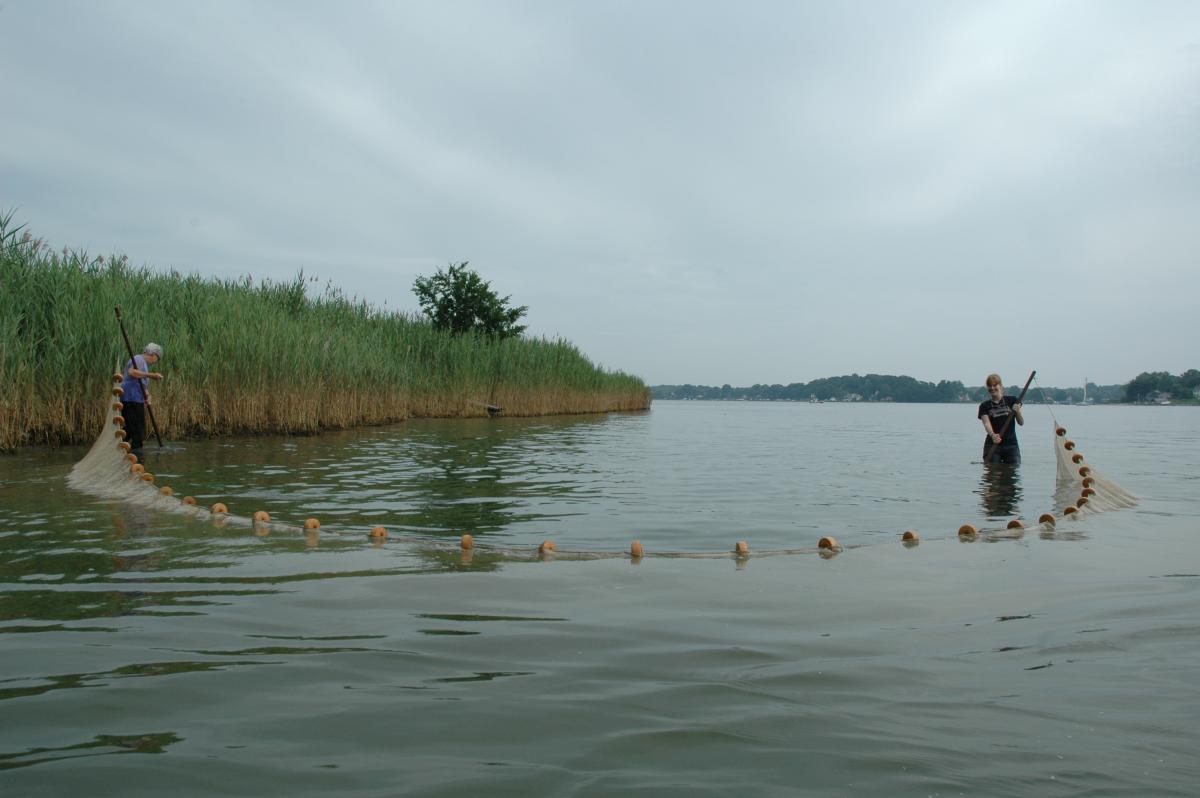- Home
- Research
- Projects
- Seine survey
- Seine survey
Seine survey
Project Goal
The goal of this project is to better understand the community structure and dynamics of the fish and crustaceans that live in shallow fringing habitats of the Rhode River.

Nearshore Communities of Fish and Crustaceans
Shallow nearshore zones provide refuge, food, and nursery grounds for small fish and crustaceans. The nearshore area, with its shallow depths and variable habitats, can play a vital role in the survival, nurturing and growth of its juvenile fish and crustacean inhabitants and are therefore a vital part of coastal ecosystems. Our research has shown that small fish, juvenile blue crabs and grass shrimp use the shallow depths as a refuge from larger predators, as nursery grounds for larval fish and small crustaceans and as a resource for food.
Sampling in the Rhode River
Since 1980, a long-term study of the community of fish and crustaceans in the nearshore zone of the Rhode River has been one of the major sampling components of the lab. The nearshore zone within the Rhode River is generally shallow, less than one meter, with low energy tidal flow. Astronomic tidal amplitude (tides caused by the moon) is about 0.5 meters with occasional wind-driven tidal fluctuation up to 2 meters. Annual seining surveys of the nearshore zone are conducted at different sites throughout the Rhode River. Each summer, surveys of the nearshore zone are conducted at 13 different sites throughout the Rhode River. Survey sites include the river mouth, small tributaries within the river, shorelines along the mainstem, and the headwaters of the river in Muddy Creek.
Shoreline compositions vary and include sandy beach, coarse wood debris, emergent vegetation, marsh, and forested shoreline. The sediments within each seine site are also variable and may include mud, sand, marsh detritus, clay, or a mix of each. We use a 16-meter long seine net of 7 mm mesh for sampling. Each seine samples 33 meters of shoreline with one person stationed on the shoreline and one 10 meters from shore. Two adjacent seines are pulled at each of the 13 stations. All organisms that are caught in the net are identified, counted, and released unharmed back into the water. A subset of each species of organism is measured. By sampling the same areas annually, we can determine spatial and temporal changes in species composition, population size structure, and abundance.
Results to Date
Fifty species of fish and two crustaceans have been identified since the study originated in 1980. Nearly half of these species are rarely collected and in only one or two stations consistently. The five most abundant species are mummichog, (Fundulus heteroclitus), striped killifish (Fundulus majalis), bay anchovy, (Anchoa mitchelli), spot (Leiostomus xanthurus), and Atlantic menhaden (Brevoortia tyrannus).
